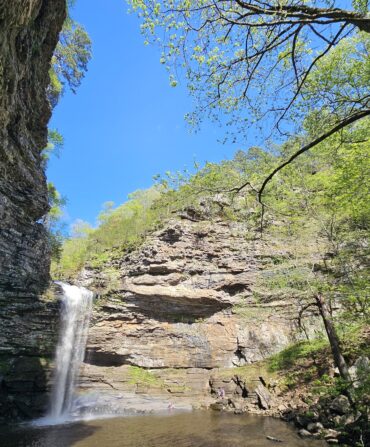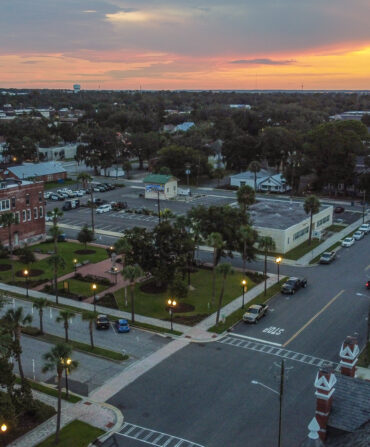Population: 1,746
Drive Time: Forty minutes northwest of Baton Rouge
Perched on a thin bluff along the Mississippi, St. Francisville is nicknamed “the town two miles long and two yards wide.” Deep in central Louisiana’s plantation country—there are more than 150 historic structures scattered throughout downtown and the immediate area—this River Road hideout, just a short jaunt up Highway 61 from Baton Rouge and about two hours from New Orleans, was founded as a burial site for Capuchin monks. They named the area for their order’s spiritual forebearer, St. Francis, the patron saint of nature and all its wildlife. Today, many yards and storefronts display statues of the saint. Even with architectural showpieces aplenty, nature remains triumphant in St. Francisville.

Photo: Cedric Angeles
The oak allée leading to Rosedown Plantation.
The 24-Hour Agenda: For historic house hunters, Rosedown Plantation is a good place to begin. It’s known for its opulent interiors, but in spring and summer its gardens are the more compelling attraction. On either side of the towering oak canopy that leads to the main house, paths snake through camellias, crape myrtles, and roses and past gurgling fountains and marble statuary. Grab a picnic lunch from the Francis Smokehouse and Specialty Meats—fried chicken, po’boys, burgers, barbecue, and house-made boudin—and head to Afton Villa Gardens, where the ruins of a Gothic Revival mansion have been transformed into a landscaped terrace with swaths of azaleas in six shades.
Late afternoon, go by Oakley Plantation, where John James Audubon arrived in 1821 to work as a drawing tutor. He found the area teeming with avian activity, and nearly two centuries later, red-bellied woodpeckers, Carolina wrens, and brown thrashers still flock here. And a flamboyant peacock will strut alongside you as you explore the plantation’s premises.
Time a visit to Myrtles Plantation, purportedly one of “America’s most haunted homes,” to catch the twilight tour, which features spooky accounts of Chloe, the spurned mistress turned jewelry-snatching spirit, and poor Mert, a ghost cat who still stalks the grounds.
Later, dinner and a cold beer at the Magnolia Café—a low-key restaurant with live music on Friday nights—will put you safely to bed.
 Stay at the centrally located St. Francisville Inn, a restored nineteenth-century Victorian where locals gather on the oak-shaded front porch to enjoy the town’s vastest collection of wines and beers. Across Commerce Street, the historic district’s main drag, the renovated 3-V Tourist Court rents retro cabins that date to the dawn of the motor age. Or you can always sleep over at the Myrtles, but beware, the tour guides repeatedly warn, “you are being watched.”
Stay at the centrally located St. Francisville Inn, a restored nineteenth-century Victorian where locals gather on the oak-shaded front porch to enjoy the town’s vastest collection of wines and beers. Across Commerce Street, the historic district’s main drag, the renovated 3-V Tourist Court rents retro cabins that date to the dawn of the motor age. Or you can always sleep over at the Myrtles, but beware, the tour guides repeatedly warn, “you are being watched.”
Meet the Locals: A Southern dinner of a different sort can be found at Al Aqaba. Owner Nasser Al Dallal, a transplant from Amman, Jordan, married a Cajun girl from Thibodaux, Louisiana, and together they preserve the Lower Mississippi River Valley’s long and oft-unrecognized Middle Eastern restaurant culture. If you’re at a loss for what to order from the lengthy menu, Al Dallal will be happy to order for you: “You like spicy?” he asks. “Have the Jordanian Baked Kafta with potatoes, tomatoes, and jalapeños.”
Myrtles Plantation tour guide Robi Gilmore just might be St. Francisville’s premier storyteller. The descendant of slaves who once lived and labored on the grounds, he’s a master at alternating between tragic tales and anecdotes that incite laughter, levity, and empathy. Whether you believe in ghosts or not—“What-ever boils your crawfish,” Gilmore says—he will have you trusting in the power of a well-spun yarn.








